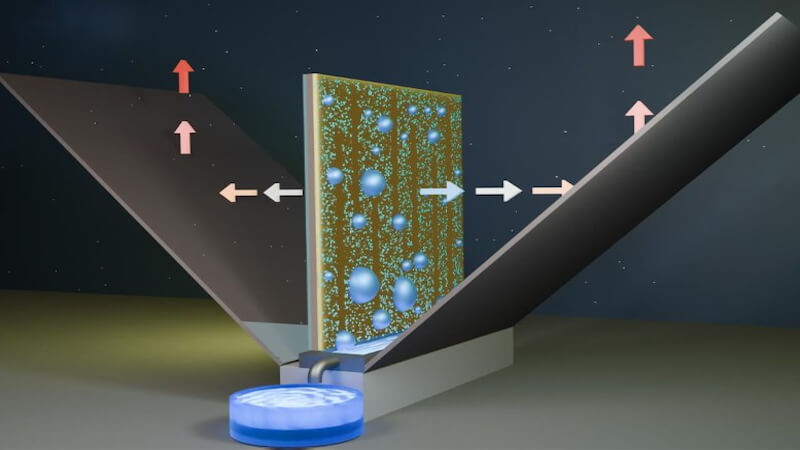
Researchers have developed a new method that allows solar cells to water and cool themselves. This should enable it to be used almost anywhere in the world.
Researchers from Saudi Arabia have a new one technology developed to solve several problems at once. It has the potential to transform the use of solar energy in hot and dry areas. In the future, solar panels will be able to cool themselves and even extract water from the air – without consuming electricity.
The background: Conventional solar panels often overheat when exposed to intense sunlight. Therefore, it requires additional cooling systems, which in turn consume energy. However, the system the researcher uses uses gravity to collect water from the air and cool the solar panels. The special thing about it is that no additional energy is required.
Solar cells cool and irrigate themselves using a special coating
Instead, the research team used a special coating material that prevents water droplets from sticking to the surface. These drops accumulate over time due to gravity. The collected water can then be used for other purposes such as irrigation or building cooling.
The approach works because there is about six times more water in the atmosphere than in all of Earth’s rivers. Various systems can collect these amounts of water from the air. However, this has previously been problematic in very dry regions such as Saudi Arabia, as engineers often needed electricity to do this. However, the new technology, which requires no electricity at all, makes it possible to obtain water in large quantities even in remote areas with little electricity.
Technology can be used sustainably and cost-effectively
In addition to the obvious environmental benefits, this technology also offers economic benefits. Since no electricity and no mechanical parts such as fans or compressors are required, operating costs are significantly reduced. Maintenance is also minimal, further reducing long-term costs.
The development could therefore play an important role in the future. The sustainable generation of electricity and the simultaneous absorption of water enable significantly more comfort – in almost every place on earth.
Also interesting:
- Researchers want to give plants a brain – using light signals
- Researchers are increasing the lifespan of liquid batteries with run-stable molecules
- Harvard: Researchers develop AI that can diagnose cancer
- Biohybrid with robot legs: Researchers teach fungus to walk
The article Through Gravitation: Solar Cells Can Cool and Water Themselves by Felix Baumann appeared first on BASIC thinking. Follow us too Facebook, Twitter and Instagram.
As a Tech Industry expert, I find the concept of using gravity to help solar cells cool and irrigate themselves to be quite innovative and promising. By incorporating gravity into the design of solar panels, we can potentially increase their efficiency and longevity, as well as reduce maintenance costs.
The idea of using gravity to facilitate the flow of water or coolant to cool the solar cells is a simple yet effective solution. By utilizing the natural force of gravity, we can create a self-sustaining system that requires minimal human intervention. This not only improves the overall efficiency of the solar panels but also reduces the risk of overheating and damage.
Additionally, the concept of self-irrigation for solar panels is a clever way to ensure that they remain operational even in harsh environmental conditions. By automatically providing water to the panels when needed, we can prevent them from becoming too hot and potentially malfunctioning. This could be particularly useful in arid regions or during heatwaves when traditional cooling methods may not be sufficient.
Overall, I believe that integrating gravity-based cooling and irrigation systems into solar panels has the potential to revolutionize the way we harness solar energy. It not only increases the sustainability and reliability of solar power systems but also demonstrates the power of innovation in the tech industry. I am excited to see how this technology develops and becomes more widely adopted in the future.
Credits